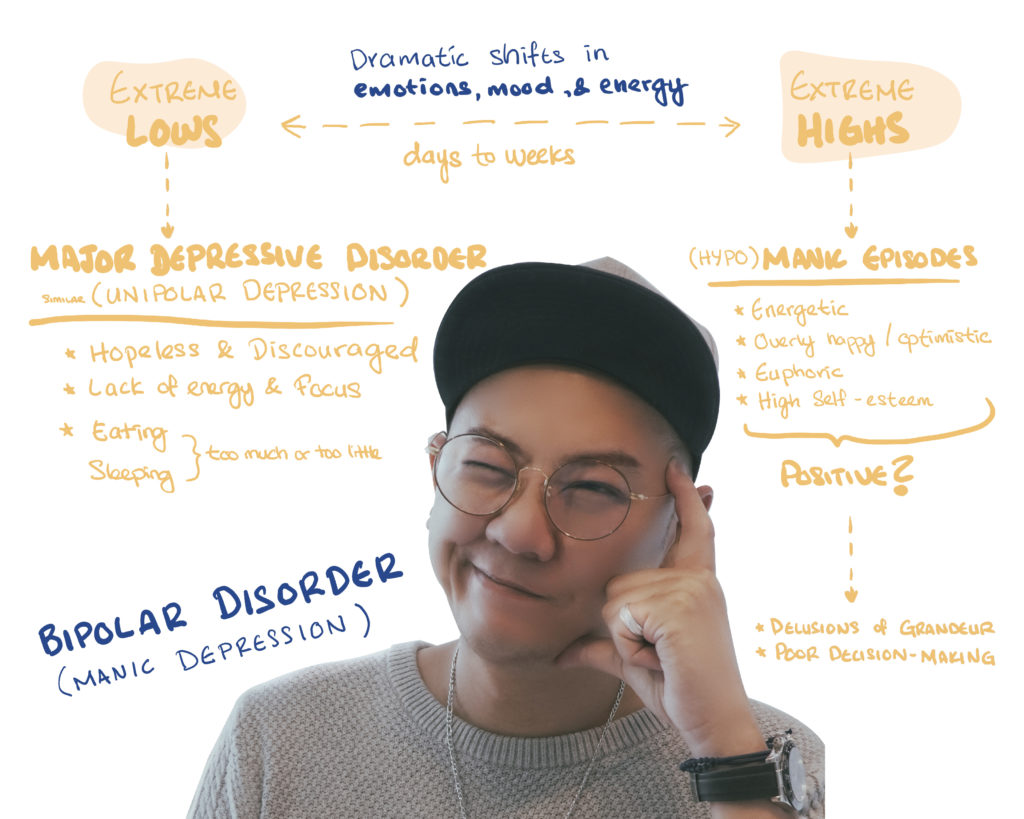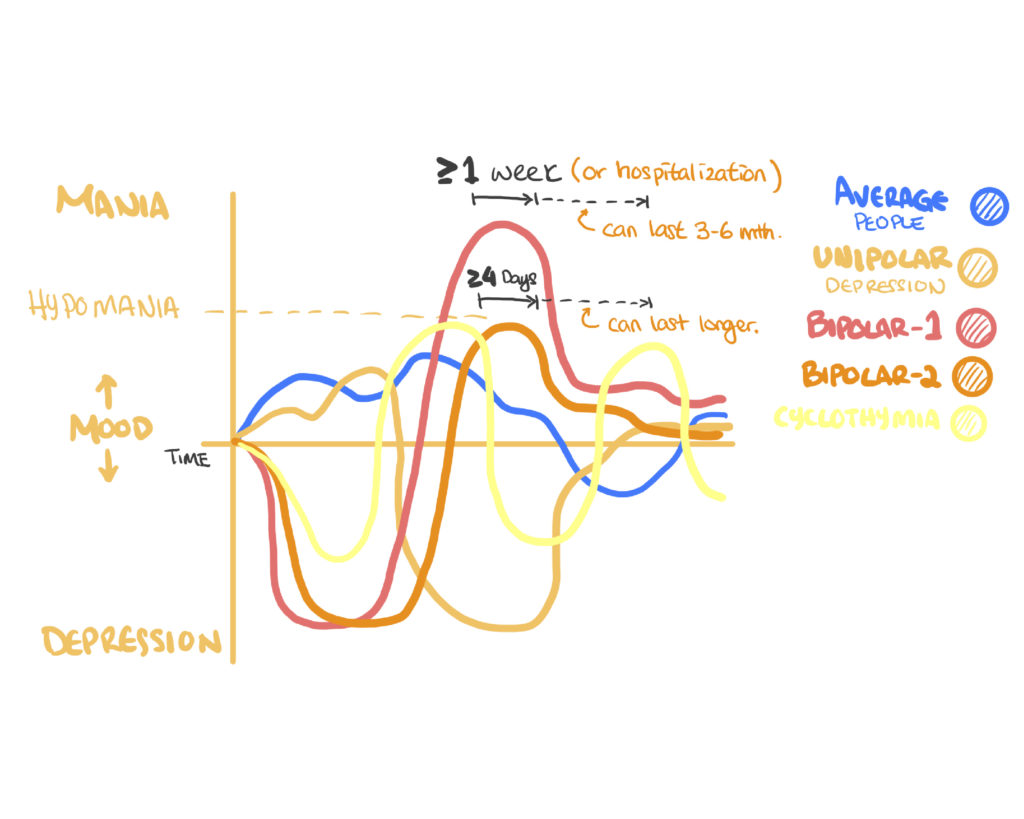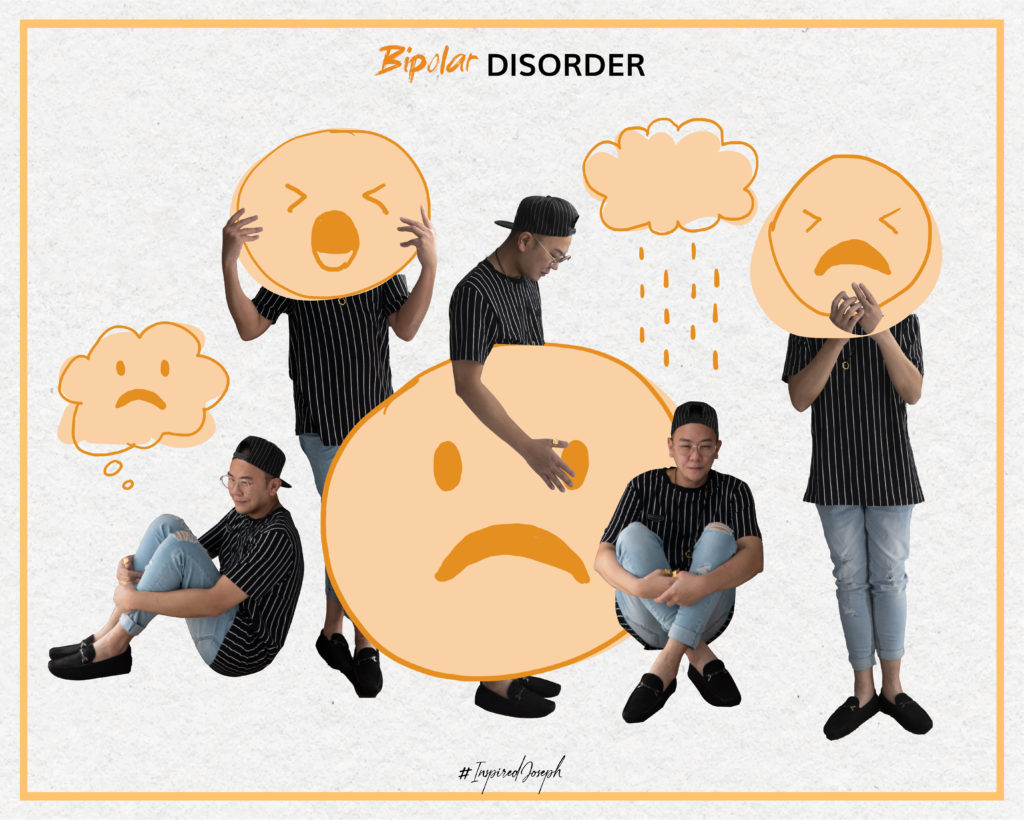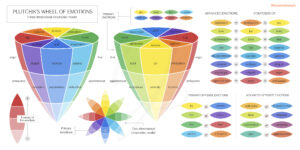Could It Be Bipolar Disorder?
What is bipolar disorder
Bipolar
Perhaps you’ve heard the term “bipolar” applied to someone who is moody or has mood swings. However, this informal usage of the term differs significantly from bipolar disorder, which was previously known as manic depression. Depression is a significant mental condition that causes a person’s emotions, mood, and energy levels to fluctuate dramatically, from extreme lows to extreme highs. These shifts, however, do not occur moment to moment. They normally take place over a period of days or weeks.
Bipolar disorders come in a variety of forms, but they always have some characteristics. First, the poor moods are similar to those experienced by people with a related disorder, major depressive disorder, commonly known as unipolar depression. People with this disorder can feel hopeless and disheartened, and they may lack motivation. But, in addition to these lows, bipolar disorders differ from unipolar depression in that people can experience periods of high moods, known as manic or hypomanic episodes, depending on the severity of the disorder. In a manic state, people can feel energised, overly happy, or optimistic, even euphoric, with extremely high self-esteem. On the surface, these appear to be very favourable traits, but when someone is experiencing a complete manic episode, these symptoms can become dangerously excessive. A person suffering from mania may invest all of their money in a dangerous business enterprise or engage in unsafe behaviour. Individuals may have pressurised speech, in which they speak at a high tempo all of the time, or they may have racing thoughts and feel wired, as if they don’t need to sleep. Delusions of grandeur are common in manic episodes. They may believe, for example, that they are on a personal mission from God or that they possess supernatural abilities, and as a result, they may make unwise judgments without concern for the repercussions.
Sometimes it takes an overwhelming breakdown to have an undeniable breakthrough
(Joseph L. Wong)


The extreme highs Symptoms of Bipolar Mania & Hypomania
Mania is a term used to describe periods of high emotion and activity in people with bipolar disorder. Euphoria is a feeling of being “on top of the world” that can occur during a manic episode. Even if the context does not warrant it, they may be overly joyful or confident. This overabundance of passion may lead to unsafe activities such as excessive gambling or unplanned sexual encounters.
However, the person is more likely to be irritable than cheerful. If others hinder them from fulfilling their desires, they may become enraged (even if said desires are likely to cause harm or pain). If the person has been using substances, irritability symptoms are more prevalent.
Mania, by definition, interferes with a person’s capacity to work or sustain a relationship.
The intense mood must persist at least one week and be present for the majority of each day to be classified as mania. A person must also have unusually high levels of energy or engage in goal-directed activity. Finally, three or more of the following symptoms must be present:
- Inflated ego and/or self-esteem. (Example: A person has delusions of grandeur, believing they are destined to rule the world.)
- Increase in goal-directed activity. (Example: A person begins building several inventions despite having no engineering knowledge.)
- Decreased need for sleep. (Example: A person wakes up after only 3 hours of sleep feeling completely rested.)
- Racing thoughts/flight of ideas. (Example: A person feels they are thinking faster than they can speak their ideas.)
- Pressured speech. (Example: A person may speak incredibly quickly, perhaps too quickly to understand.)
- Increased distractibility. (Example: A person cannot focus on a conversation due to faint background noise.)
- Reckless behavior(s) which may impact one’s financial, social, or physical wellbeing. (Example: A person spends their savings on a car they don’t need and normally wouldn’t want.)
Hypomania is a milder form of manic behaviour or versions of mania. Hypomanic episodes are typically shorter, lasting four days or more. It has the same symptoms as the above-mentioned manic criteria. Hypomania, on the other hand, rarely stops a person from functioning on a daily basis. If a person develops psychosis or requires hospitalisation, their symptoms are considered manic.
Basic Signs of Mania:
- feeling overly happy or “high” for long periods of time
- feeling jumpy or “wired”
- having a reduced need for sleep
- talking very fast, often with racing thoughts and rapid changes of topic
- feeling extremely restless or impulsive
- becoming easily distracted
- feelings of grandiosity, which is when you feel you’re very important or have important connections
- feeling as if you can do anything
- engaging in risky behavior, like having impulsive sex, gambling with life savings, or going on big spending sprees
- having a low appetite

the extreme lows Symptoms of Bipolar Depression
Bipolar’s depressive phase is the polar opposite of its manic phase. Extreme melancholy, emptiness, or self-hatred are common feelings. They frequently lose interest or motivation in any task. Bipolar depression, like mania, can cause severe distress and damage.
A depressive phase is defined by the same characteristics as major depression (MDD). Bipolar depression differs from manic or hypomanic depression in that it occurs alongside manic or hypomanic symptoms.
Symptoms must be present for at least two weeks to be considered a depressed episode. At least five of the following symptoms will be present in a person suffering from bipolar depression:
- An empty, hopeless, or sad mood that is present for most of the day, nearly every day.
- Diminished interest or pleasure in activities.
- Changes in appetite or weight (weight may increase or decrease by more than 5% in a month).
- Changes in sleep (insomnia or hypersomnia).
- Fatigue or loss of energy.
- Psychomotor agitation (restlessness or other increased motion) or psychomotor depression (slowing down of movement).
- Difficulty remembering, making decisions, and/or concentrating.
- Excessive feelings of worthlessness or guilt.
- Recurrent thoughts of death or suicide.
Basic Signs of Depression:
Like mania, depression can cause other symptoms as well, but here are 10 of the key signs of depression from bipolar disorder:
- feeling sad or hopeless for long periods of time
- withdrawing from friends and family
- losing interest in activities that you once enjoyed
- having a significant change in appetite
- feeling severe fatigue or lack of energy
- feeling slowed down and unable to carry out simple tasks
- talking slowly
- sleeping too much or too little
- having problems with memory, concentration, and decision making
- thinking about death or suicide or attempting suicide

TYPES OF BIPOLAR Bipolar I, Bipolar II, and Cyclothymia
Bipolar I is the only type in which mania is present. People with bipolar I can also experience hypomanic or depressive episodes, but these are not required for a diagnosis. A person only needs to have one episode of mania in their lifetime to qualify for bipolar I. That said, 90% of people who have one manic episode will have another. Over half of manic episodes are immediately followed by a depressive episode.
Bipolar II involves hypomania and depression. If an individual develops mania (5-15% of people with bipolar II do), then their diagnosis shifts to bipolar I. Contrary to popular belief, bipolar II is not a milder version of bipolar I. While the hypomanic symptoms tend to be less severe, the depressive phases are often longer and more frequent. Bipolar II tends to be more chronic than bipolar I and involve more mood episodes overall. A person may have several depressive episodes before experiencing their first hypomanic episode. Nearly 12% of people with bipolar II are first diagnosed with major depression. Once hypomania occurs though, the diagnosis shifts to bipolar II.
Cyclothymia describes when a person has chronic, fluctuating mood episodes which don’t meet the criteria for hypomania or depression. For example, a person may have only two depression symptoms instead of the required five. To be diagnosed with cyclothymia, an adult must experience both high and low mood episodes for at least 2 years. (Children and teens only need to have symptoms for one year.) A person must be experiencing a mood episode more often than not. If the person experiences break between episodes, those symptom-free periods are no longer than 2 months. Cyclothymia symptoms are often milder than those in bipolar I or bipolar II, but they can still cause distress. A person may also struggle with the prolonged nature of their mood issues. According to the DSM, someone with cyclothymia has a 15-50% chance of developing bipolar I or II later in life.
With our free mood monitoring worksheet, you may enhance your quality of life by keeping track of your moods and behaviours.


the ins and outs Bipolar Related Conditions
Bipolar often occurs alongside other mental health conditions. Certain types of bipolar are more likely to be comorbid with specific issues.
- Substance Abuse: Alcohol or drug addiction is common among all types of bipolar. Substance abuse occurs in over half of people with bipolar I and 37% of people with bipolar II.
- Anxiety: Anxiety issues (phobias, social anxiety, etc.) are common in bipolar I and II. Anxiety occurs at a rate of 75% for both bipolar I and II.
- ADHD: Attention-deficit and hyperactivity issues are common among adults with bipolar I and children with cyclothymia.
- Eating and Food Issues: Around 14% of people with bipolar II have an eating or food issue. Binge eating is more common than bulimia or anorexia.
People with bipolar II are likely to have multiple co-occurring issues. Over half of people with bipolar II have three or more comorbidities. Certain diagnoses may be more prominent during specific phases. Eating issues and anxiety can be heightened during the depressive phase, while substance abuse has been linked to hypomanic symptoms.
Bipolar can be a serious condition, especially when it occurs alongside other diagnoses. However, bipolar is treatable. With the right therapist, an individual can greatly improve their quality of life.
The actual underlying cause of bipolar disorder is unknown, and no specific bipolar gene has been identified, as with other mental health conditions, although it has been discovered that genetic and environmental variables have an influence. One intriguing clue is that persons who have bipolar disorder in their family are 10 times more likely to get it themselves. Another clue is that some drugs and treatments, such as selective serotonin reuptake inhibitors or SSRIs, can cause manic episodes.
Lithium salts are one of the most successful treatments, and it’s also one of the oldest treatment methods. Lithium salt functions as a mood stabiliser, smoothing out the highs and lows that people go through, therefore it’s better for treating manic than depressed episodes.
Now, unlike certain disorders like unipolar depression, psychological interventions like talk therapy or cognitive behavioral therapy are not particularly effective in treating the manic episodes of bipolar disorder.

Bipolar depression really got my life off track, but today I'm proud to say I am living proof that someone can live, love and be well with bipolar disorder when they get the education, support and the treatment they need.
(Demi Lovato)

the ins and outs Summary
The extremes of happiness and sadness characterising bipolar disorder are symptoms of this mental condition.
Bipolar I disorder is characterised by at least one episode of mania, which is characterised by a highly elevated mood. This is sometimes followed by periods of depression. When experiencing mania, it is common to have agitation, restlessness, and overexcitement. Feeling exhausted and unable to function normally is common during a depressed episode.
If you have bipolar II, you are more prone to suffer depression, but you may also have hypomania, a milder elevated mood. It’s also possible to experience extremes of happiness and sadness briefly.
Depression, drug abuse, attention deficit hyperactivity disorder (ADHD), and other illnesses may have symptoms of bipolar disorder. Obtaining an accurate diagnosis might be challenging, but it is necessary for receiving the proper treatments.

Consult a doctor
Consult your physician.
Discussing your concerns with a medical professional should be your first step if you or a loved one exhibits symptoms of bipolar illness. Diagnosis is the first treatment step; only a medical professional can diagnose.
Treatments may control symptoms and improve quality of life through psychiatrists, counseling, or other medicines.
Download our mood monitoring worksheet for managing bipolar disorder.

Scanxiety – Phases, Symptoms, and Coping with it

Reaching new levels of relaxation using guided imagery – for stress and anxiety

The Emotion Wheel: Everything to know

Coping with lung cancer

Deeper insight into what cancer patients feel
